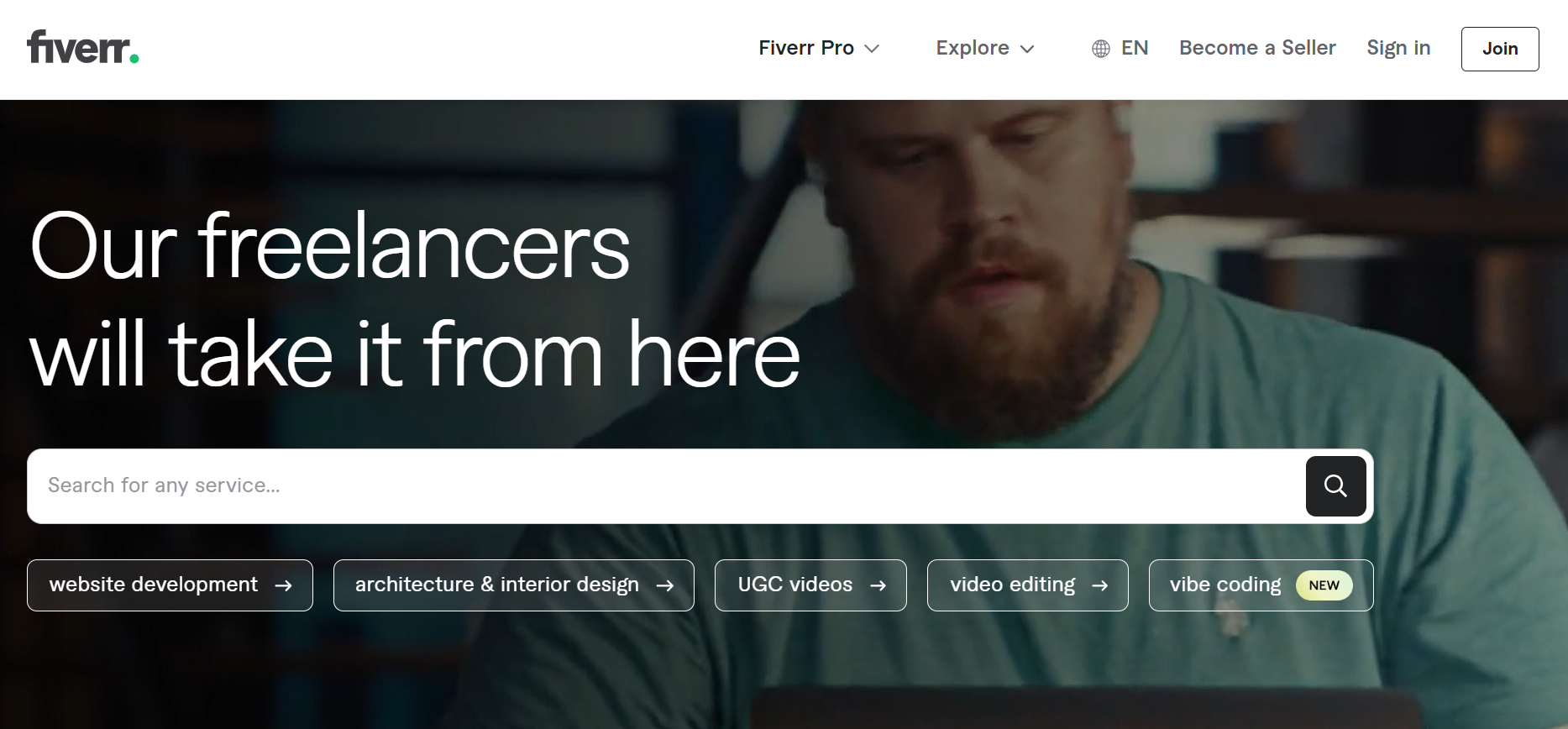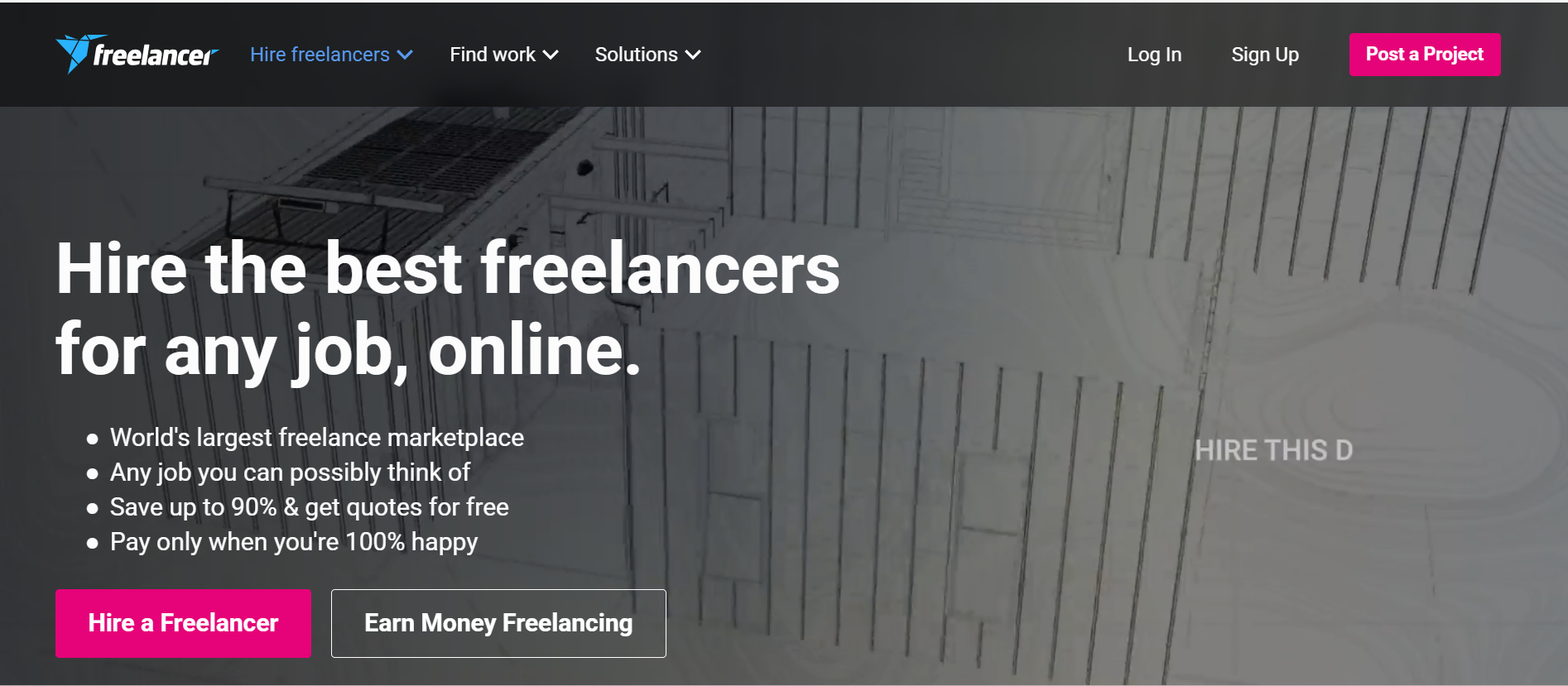.png)

A global tech marketplace is a platform where businesses and tech professionals connect, collaborate and deliver work across borders. Unlike gig platforms built for small one-off tasks, modern marketplaces support real projects, team collaboration, transparent communication and secure global payments. They enable companies to move faster and give contractors direct access to meaningful tech opportunities.
.png)




Most tech contractors and businesses rely on familiar names; Upwork, Fiverr, Toptal, Freelancer.com, Turing, and others. But these platforms were designed for an old version of work: individual gigs, short-term tasks, and basic matching.
The world has changed.
Tech projects today are bigger, faster, more collaborative and global.
Let’s break down how the top platforms rank today and why they fall short.
Here’s a simple look at the major players and what they actually offer:

Upwork is huge, with millions of users, endless jobs, and global reach. It’s great for quick gigs or small tasks. But because it’s overcrowded, independent tech professionals often struggle with low visibility, high fees, and constant competition. For businesses, sifting through thousands of profiles makes hiring slow and inconsistent.

Fiverr offers speed: quick tasks at affordable rates. It works for small creative jobs or simple tech fixes, but it’s not built for real development work, team-based projects, or long-term engagements. Serious tech professionals can’t rely on Fiverr to build stable careers, and businesses can’t rely on it to build real products.

Toptal is known for its top 3% talent pool. Enterprises trust it for big projects requiring highly vetted skills. But Toptal is extremely selective, and it operates more like a premium staffing vendor than a marketplace. Contractors struggle to gain access, and businesses lose the flexibility of direct engagement.

These platforms were early players in the freelance world. They offer a wide global footprint, but their systems and project quality haven’t evolved to match modern tech delivery. Many contractors find outdated interfaces, low-value jobs, and limited filtering — making it hard to build meaningful, long-term work.
Across all major players, the same gaps appear:
These platforms were built for gigs, not global tech delivery.
That’s the real problem.
Independent tech contractors today operate in one of the fastest-growing but most unpredictable segments of the global workforce. Yet despite the demand for skills, the experience of working through traditional freelance platforms feels increasingly unstable. Many contractors report that income inconsistency is their biggest roadblock — with projects coming in cycles, long gaps between opportunities, and no dependable workflow.
On most platforms, visibility is a challenge in itself. Thousands of contractors may bid for the same role, and ranking algorithms often hide highly skilled professionals behind lower-cost profiles. This leads to a different but common frustration: high competition with low-quality filtering, resulting in vague project descriptions, unclear expectations, and wasted time chasing leads that don’t convert.
Even when projects do come through, many platforms reduce contractors to anonymous profiles with limited context. There is rarely direct communication with the actual business, forcing contractors to operate through layers of coordinators or platform-managed messaging systems. This prevents relationship-building and long-term repeat work; both of which are essential for career stability.
Another major limitation is the lack of team-based support. Modern tech work is inherently collaborative — involving backend, frontend, DevOps, QA, data, and product roles. Traditional gig platforms treat every project as a solo task, leaving no room for contractors to build squads or deliver as a cohesive unit. For professionals who want to scale their careers from “individual contributor” to “team leader”, old systems simply don’t offer the structure.
Finally, payments and earnings remain a broken experience across legacy platforms. High commissions, payment holds, withdrawal delays, and hidden currency conversion fees make it difficult for contractors to receive the fair value of their work. In short: most existing marketplaces were built for small gigs, not for career-building, global-tech contracting.
On the other side, businesses relying on external talent face an entirely different but equally difficult set of challenges. Many companies juggle multiple vendors, agencies, and freelance portals, resulting in vendor sprawl — where no single system provides a unified view of talent, cost, or delivery. This fragmentation makes it nearly impossible to maintain operational clarity.
As teams scale or spread across regions, leaders struggle with delivery visibility. Simple questions such as “Who is working on this?”, “How many hours have been billed?”, or “Where are the delivery risks?” often don’t have a single source of truth. This lack of insight slows decision-making and increases project delays.
Compliance becomes another major hurdle—especially when hiring talent from different countries. Each region comes with its own labor regulations, documentation standards, taxation rules, and payment constraints. Without a unified platform to manage these complexities, businesses face increased financial and legal risks during cross-border contracting.
Hiring speed is also a major pain point. Sourcing, vetting, contracting, and onboarding through traditional platforms can take weeks, creating friction for businesses that need to respond quickly to market opportunities or scale engineering capacity on demand.
And even when talent is secured, most platforms only support individual contributors. Businesses working on modern digital projects need entire teams, not isolated freelancers. Without structured support for assembling squads, coordinating roles, or aligning delivery workflows, organisations struggle to build the momentum required for large-scale tech initiatives.
Given these shared frustrations, both contractors and businesses are asking for the same foundational shift: a marketplace designed not for quick gigs, but for real, long-term tech delivery.
Contractors want:
Businesses want:
This new model emphasises clarity, transparency, collaboration, and control.
And the industry is now beginning to shift toward platforms that support this complete end-to-end experience.
WorkWall is designed specifically for this new era of B2B tech contracting — solving problems for both contractors and businesses in one integrated ecosystem.
For contractors, WorkWall finally provides direct access to global companies, eliminating the layers of middlemen and opaque communication found in older platforms. Professionals can work as individuals or form teams, allowing them to take on larger, more impactful projects. WorkWall’s built-in tools let contractors manage time, track milestones, collaborate with teammates, and receive secure, on-time payments — all in one place.
For businesses, WorkWall becomes the operational backbone of external tech delivery. Companies can post complex projects (not micro-gigs), onboard talent quickly, and manage entire delivery workflows—including timesheets, milestones, payments, and compliance—without jumping across multiple systems. Real-time visibility lets teams track progress, identify bottlenecks, and operate with confidence across borders.
WorkWall is not a gig marketplace.
It’s not a staffing agency.
It’s not a vendor aggregator.
It is a global tech marketplace built for B2B contracting, where both sides work directly, transparently, and collaboratively — the way modern tech execution actually happens.
The nature of tech work has changed.
Teams are global.
Deliverables are complex.
Timelines move fast.
Contractors want real ownership.
Businesses want reliability, visibility, and control.
Yet the platforms we’ve relied on for years were built for a different era — one focused on small tasks, individual gigs, and simple matching.
WorkWall is building the marketplace that aligns with today’s reality:
The industry is ready for a better system — one that supports both businesses and independent tech professionals.
WorkWall is building exactly that.
.png)













Stay ahead of the tech curve! Subscribe to our weekly newsletter for a curated dose of the latest industry insights, project highlights, and exclusive updates.